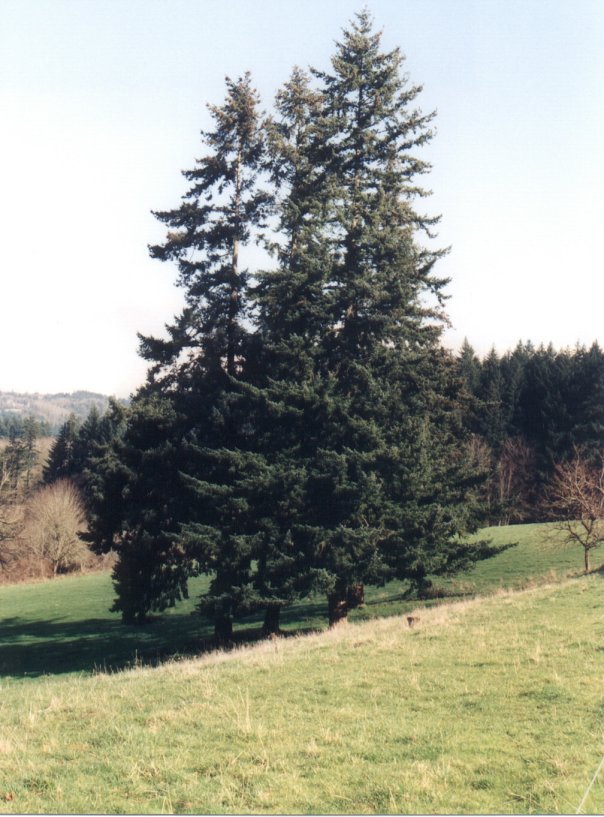| Botanical Name: Pseudotsuga menziesii | |
| Common Name: Douglas-fir |

-
Anatomy
-
Culture
-
Design
Plant Type
Tree, Conifer
Height Range
25-40', 40-60', 60-100'
Flower Color
n/a
Flower Season
n/a
Leaf Color
Blue Green, Grey Green
Bark Color
Grey
Fruit Color
Brown
Fruit Season
Persistent
Sun
Full, Half
Water
Medium, Extra in Summer
Growth Rate
Moderate, Slow
Soil Type
Clay, Loam
Soil Condition
Average, Rich, Well-drained
Soil pH
Neutral
Adverse Factors
n/a
Design Styles
Meadow, Ranch
Accenting Features
Specimen
Seasonal Interest
Winter
Location Uses
Background
Special Uses
Screen, Wind Break
Attracts Wildlife
n/a
Information by: Stephanie Duer
Photographer: Connon Nursery
Photographer: Connon Nursery
-
Description
-
Notes
Douglas-fir is a lovely, dramatic large evergreen with sweeping horizontal branches with pendulous branchlets that gives it an airy, graceful appearance. Though it grows taller in nature, it gets about 40 to 60 feet tall and 15 to 20 feet wide in cultivation. It has blue-green to grey-green needles and long tan cones that are persistant. Young trees have smooth, grey bark with resin blisters; mature trees have fissured, darker bark.
Grow in full sun to light shade in well drained soil. It prefers soils that are loamy, organic, and well drained. Sensitive to over-watering and requires excellent drainage. The heat in the valleys can make it tough to find that balance of enough moisture and not over watering.